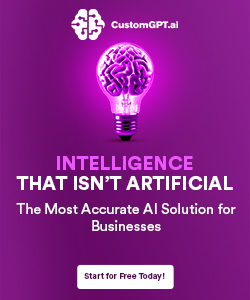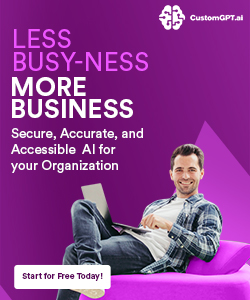With the rapid advancement of artificial intelligence, you may be wondering about its potential impact on society. While AI systems offer numerous benefits, they also have the capacity to disrupt social structures, labor markets, and ethical considerations. This blog post will explore the dual-edged nature of AI technologies and how their integration into everyday life could serve as an adverse catalyst for societal transformation, raising crucial questions about the future you are navigating. Understanding these implications is key to making informed decisions as we move forward in an AI-driven world.
Understanding AI Systems
For many, understanding AI systems begins with grasping their fundamental principles. These technologies utilize vast data sets and advanced algorithms to emulate human cognition, potentially transforming industries and societal norms. You are likely to encounter various types of AI systems, each with distinct functionalities and applications that shape our daily lives as well as global economies.
Definition and Types of AI
For a comprehensive grasp, you need to identify the types of AI systems that exist. Below are some common categories:
- Narrow AI: Specialized in one task, like virtual assistants.
- General AI: Exhibits human-like intelligence across various tasks.
- Superintelligent AI: Surpasses human intelligence, still theoretical.
- Reactive AI: Designed to respond to specific stimuli, like game AI.
- Limited Memory AI: Learns from historical data to make decisions.
Thou must explore these distinctions to fully appreciate the landscape of AI technologies.
| Narrow AI | Specializes in specific tasks |
| General AI | Exhibits human-like understanding |
| Superintelligent AI | Hypothetical AI surpassing human capabilities |
| Reactive AI | Responds to current situations |
| Limited Memory AI | Learns from past experiences |
Current Applications of AI
After defining AI systems, it is worth exploring their various applications in contemporary society. AI technologies are revolutionizing sectors such as healthcare, finance, manufacturing, and entertainment, enhancing efficiency and productivity. You may have already interacted with AI in your daily routines without being aware of its presence.
Plus, AI’s current applications extend beyond the workplace; they influence your everyday experiences as well. From virtual health assistants that help manage your wellness to automated financial advisors that optimize your investments, AI is embedded in tools that enhance personal productivity. In education, intelligent tutoring systems tailor learning experiences to individual needs. As AI continues to develop, its impact on your life will likely deepen, prompting both opportunity and challenge for your society.
Potential Adverse Effects of AI
Some commentators argue that AI systems bear the potential for significant adverse effects, which could transform society in ways you might not anticipate. While these technologies offer remarkable advancements, they could also exacerbate existing issues such as job loss, economic instability, and social disparities, ultimately reshaping communities in uncomfortable ways.
Economic Disruption
Economic disruption is a critical concern as AI continues to evolve. You may witness industries shifting dramatically, with machines replacing human labor in various sectors. This shift has the potential to lead to widespread job displacement, creating uncertainty in the workforce and transforming traditional economic structures.
Social Inequality
Below the surface, AI can intensify social inequality by creating a divide between those who can afford new technologies and those who cannot. As advances in automation and machine learning become more widespread, you may find that access to these innovations is unevenly distributed, leaving disadvantaged communities further behind.
A growing concern is that AI may not only deepen existing divides but also create new barriers to entry in the workforce. As you navigate this landscape, it’s imperative to recognize that those with the skills to leverage AI technologies will have a significant advantage. This shift could widen the gap between the affluent and those lacking digital literacy or access to education, leading to systemic inequalities that can affect your community’s cohesion and overall prosperity.
AI and Ethical Implications
The rise of AI systems brings forth a plethora of ethical implications that demand your attention. As these technologies increasingly influence various sectors, understanding the potential ethical dilemmas they introduce becomes vital. You must consider how issues related to bias, fairness, accountability, and transparency in AI could fundamentally reshape societal norms and expectations.
Bias and Fairness
Behind every AI system, there lies the risk of inherent biases stemming from the data used in its training. You should be cognizant of how these biases can lead to unfair outcomes in critical areas such as hiring, law enforcement, and healthcare. This not only affects individual lives but also perpetuates existing social inequalities, making it imperative for you to advocate for fairness in AI applications.
Accountability and Transparency
Behind the complexity of AI algorithms often exists a lack of accountability and transparency. If you encounter a machine learning model producing biased results or harmful recommendations, determining who is responsible can be a challenging endeavor. This uncertainty can erode your trust in AI systems, underscoring the need for clear accountability mechanisms and transparent processes in their development and deployment.
Further, establishing accountability and transparency in AI systems is crucial for building trust with users like you. They should be designed in a way that allows you to understand how decisions are made and who is responsible for them, ensuring that ethical standards are upheld. This approach not only empowers you as an informed user but also drives developers to prioritize ethical considerations, paving the way for responsible innovation.

The Role of Regulation
After acknowledging the vast influence of AI systems on society, it’s vital to consider the role of regulation in managing their impact. Effective regulations can help mitigate potential risks while promoting innovation, ensuring that these technologies serve the public good. Balancing the need for oversight with the freedom to innovate will be key in steering society towards a positive transformation.
Current Regulatory Frameworks
On a global scale, current regulatory frameworks for AI vary significantly, with some regions adopting stricter guidelines than others. Many countries focus on data protection and ethical guidelines rather than comprehensive AI governance. As you evaluate these frameworks, consider how inconsistencies can affect businesses and individuals navigating the evolving landscape of AI technology.
Recommendations for Future Policies
Among the necessary steps forward, developing a unified framework that addresses ethical considerations, accountability, and transparency is vital. This can help create more consistency across jurisdictions and industries, ensuring that AI technologies are aligned with societal values. Your involvement in advocating for these policies can influence a more equitable and responsible use of AI.
In fact, fostering collaboration between governments, industry leaders, and the public can facilitate the development of comprehensive policies. Establishing interdisciplinary task forces could lead to better-informed guidelines, emphasizing proactive rather than reactive approaches to regulation. Your engagement in dialogues about these policies will support the creation of a regulatory environment that not only safeguards your rights but also harnesses the transformative potential of AI systems.
Case Studies
Once again, the impact of AI systems on society can be illuminated through several compelling case studies, showcasing both their implementation and the resulting effects. Here’s a detailed look at significant examples:
- AI in healthcare: A 30% reduction in patient wait times at hospitals using predictive analytics.
- AI-driven logistics: 20% cost savings reported by firms after implementing automated routing.
- Smart cities: 15% decrease in traffic accidents attributed to AI traffic management systems.
- Customer service automation: 40% increase in customer satisfaction through AI chatbots.
- Environmental monitoring: 25% improvement in clean air indices linked to AI data analysis.
Successful Implementations
Behind these case studies lie remarkable stories of how AI systems have positively transformed various sectors. By addressing specific pain points, organizations have seen improvements in efficiency, cost-effectiveness, and user satisfaction. These successful implementations serve as a guide for how AI can be effectively harnessed in your own context.
Failures and Lessons Learned
Behind every success story, there are instances where AI systems did not deliver the expected results, leading to valuable insights for future endeavors. Identifying pitfalls, such as overlooking user needs or lack of adequate training data, is vital to avoid similar issues in your implementations.
With the experiences of failed AI initiatives, you can learn to prioritize thorough testing and stakeholder engagement. One notable example included a widely publicized recruitment tool that exhibited bias against certain demographics due to flawed training data. This emphasizes the importance of ensuring diversity and fairness in your data sets, which can prevent your AI systems from perpetuating existing inequalities. Ultimately, these lessons can guide your approach to developing responsible and effective AI solutions.
Public Perception and Awareness
Many individuals hold mixed feelings about AI systems, often swayed by sensational media portrayals and perceived threats. Your understanding of AI shapes not only personal opinions but also the broader societal narrative. As AI technology continues to advance, the way you perceive its impact can significantly influence discussions around innovation, ethics, and regulation. Heightened public awareness can either support or hinder responsible AI development, emphasizing the need for informed dialogue and education.
Misinformation and Public Fear
Beside general skepticism towards AI, misinformation can exacerbate public fear. You may come across exaggerated claims about AI’s capabilities, leading to a distorted understanding of its potential risks. This fear can drive resistance to adopting beneficial technologies, hindering progress and skill development in your community. Addressing these misconceptions is imperative to foster confidence in AI systems and ensure their responsible integration into society.
Strategies for Education
Below are key strategies to enhance public understanding of AI. Engaging communities through workshops and informational sessions can demystify AI technologies. You can benefit from interactive demonstrations showing practical applications and the benefits of AI in everyday life. Moreover, promoting transparent discussions about ethical considerations helps clarify misconceptions and encourages critical thinking about technology’s role in society.
A collaborative approach involving schools, community groups, and tech organizations can significantly elevate your understanding of AI. By implementing comprehensive curricula on AI, offering public seminars, and providing accessible resources, you can bridge the knowledge gap. Empowering your community through education not only alleviates fears but also nurtures a more informed populace that can navigate the evolving landscape of AI responsibly and innovatively.
Final Words
With these considerations, you can see that AI systems have the potential to serve as both beneficial tools and adverse catalysts for societal transformation. Your understanding of the ethical implications and societal impacts of these technologies is necessary for navigating the complexities that lie ahead. By engaging with these developments thoughtfully, you can contribute to steering AI in a direction that enhances societal well-being rather than undermining it, ensuring that technological advancements align with your values and aspirations for a better future.
Q: How might AI systems inadvertently contribute to social inequality?
A: AI systems can contribute to social inequality through biased algorithms that reflect existing prejudices. If the data used to train these systems is not diverse or is skewed towards certain demographics, the outcomes may favor those groups while marginalizing others. This can manifest in various domains, such as hiring practices, law enforcement, and loan approvals, where AI decisions may perpetuate or even exacerbate existing disparities. Furthermore, access to advanced AI technologies is often concentrated among wealthier individuals or organizations, widening the gap between socioeconomic classes and making it harder for underrepresented groups to compete.
Q: In what ways can AI alter traditional job markets and employment patterns?
A: AI has the potential to significantly change job markets by automating routine tasks, which may lead to job displacement in certain sectors. Jobs that involve repetitive, predictable tasks are particularly at risk, as AI systems can execute these functions more efficiently than humans. However, while some jobs may be lost, new roles may also emerge that require human oversight, creativity, or emotional intelligence. This transition can create a mismatch in skills within the workforce, leading to challenges in job retraining and potential increases in unemployment for affected workers. Organizations must actively manage this shift to ensure that workers have access to the necessary skills and training required for the new job landscape.
Q: What role can policy play in mitigating the potential negative impacts of AI on society?
A: Policy plays a pivotal role in addressing the backlash that can arise from the implementation of AI systems. Governments and regulatory bodies can develop frameworks that promote transparency, accountability, and ethical guidelines for AI usage. This includes ensuring that AI algorithms are subject to audits for bias and fairness. Additionally, policies can support education and upskilling programs to prepare the workforce for changes brought by AI. Investment in research and development of AI technologies can also be directed toward societal benefit, fostering innovation that addresses key challenges without exacerbating existing inequalities. By proactively shaping the regulatory landscape, policymakers can help to harness the benefits of AI while minimizing its adverse effects on society.










